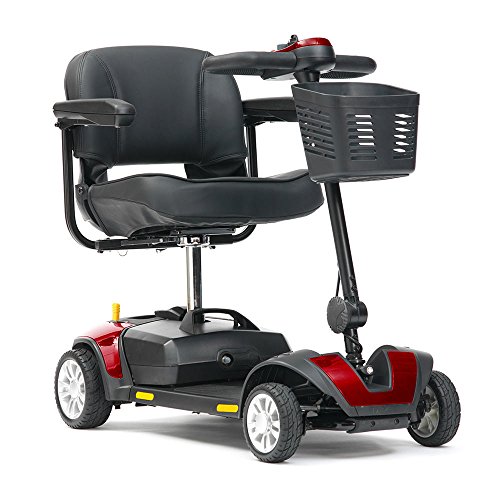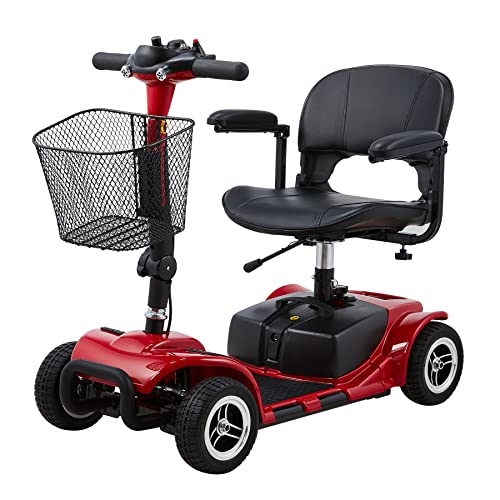 mobility scooter 4mph Scooter Laws
mobility scooter 4mph Scooter LawsMobility scooters on pavements Law scooters are a popular mode of transportation for individuals who require a safe and efficient way to navigate their surroundings. However, it is essential that users know and comprehend local regulations and rules regarding road travel.
Mobility scooters are able to be operated on sidewalks or pedestrian walkways. However, they must respect pedestrians and avoid speeds that could impede traffic.
Class 2 and 3 scooters
If you're thinking of buying a mobility scooter for yourself or an elderly relative There are a myriad of choices available. It is essential to ensure that you select the right model, as there are limitations on the size and radius of turning when using it on public transport, as well being able to travel at a speed limit on pavements. It is also important to know the distinction between Class 2 and Class 3 scooters as they are each made to suit different requirements and conditions.
Class 2 scooters are made specifically for use on pavements and indoor spaces, with a maximum speed of 4mph. They are great for shopping trips, pavement transportation and for navigating urban areas where space is restricted. As opposed to Class 3 Scooters they do not require registration with the DVLA. They cannot be driven on roads (except in areas with no pavement). Class 2 mobility scooters can be a great option for people who travel often for short distances or are concerned about their weight.
A Class 3 scooter is an ideal alternative for those who require an easier solution to their mobility issues. It can be driven on the road up to 8 mph. They should be fitted to limit their speed at 4mph on pavements and shouldn't be driven on cycle paths that are designated as 'cycle-only'. Dual carriageways are best avoided however if they are required for safety or you have an amber flashing lamp then you are able to use them.
Class 3 scooters are more expensive than those of Class 2 due to the fact that they must meet higher specification requirements for road use. They also need to have effective brake systems, lights, and a rearview mirror. The price is reflective of the additional safety and convenience however, this investment could provide greater independence for those who cannot drive or walk long distances. It is also possible to travel further to meet up with family or friends in certain situations.
Pedestrians
Mobility scooters are a practical and safe method for those who have limited physical capabilities or sensory abilities to move around. While they can provide a large deal of independence but they must be used with care to protect the safety of others and to ensure that they do not violate any laws.
One of the most frequently asked questions regarding mobility scooters is whether they can be used on roads. The answer is contingent on the local laws and ordinances. In general, most municipalities restrict road access for mobility scooters only to sidewalks and streets with low traffic. Furthermore, the majority of mobility scooters aren't designed to keep up with traffic, and so operating them on a busy street could result in an accident that could severely cause injury to the driver.
 On sidewalks mobility bikes should be operated at a speed in line with pedestrians. They must also give way to pedestrians and issue an audible warning if they intend to pass. Additionally, it is important for scooter operators to adhere to any posted signs and regulations regarding pedestrian routes and crossings. This will improve safety of pedestrians and scooter riders.
On sidewalks mobility bikes should be operated at a speed in line with pedestrians. They must also give way to pedestrians and issue an audible warning if they intend to pass. Additionally, it is important for scooter operators to adhere to any posted signs and regulations regarding pedestrian routes and crossings. This will improve safety of pedestrians and scooter riders.Class 2 scooters must be restricted to 4 speed. They are often used on roads. They pose a greater risk to pedestrians than bigger scooters. It is essential that scooter drivers drive with care and are aware of other users. Additionally, they must ensure that they park their scooter in areas that do not obstruct pedestrian traffic or access.
As a general rule of thumb it is not recommended to operate a mobility scooter on any trail or path that is specifically designated for bicycles. In addition, many state parks and other outdoor destinations have restrictions on the use of motorized scooters. These restrictions are intended to safeguard the environment and to prevent accidents that may harm or hurt scooters or other pedestrians. Many cities also have laws that prohibit scooters from operating on roads with high traffic.
Parking
Mobility scooters give freedom and independence to thousands of people across the UK. There are a few rules that must be observed when using these vehicles. Parking regulations, yielding pedestrians and making sure other users are safe are all required by the rules. The rules also ensure that mobility scooters are properly maintained, and do not obstruct pedestrian walkways or sidewalks. It is also important to take special care when transferring from the pavement mobility scooter with lithium battery to the road. This is particularly true in the absence of dropped kerbs near by.
In general, scooters are not recommended for use on roads unless they are class 3 and are specifically designed for road use. They should not be used on cycle or bus lanes and should not exceed 4 mph. If you are planning to use your mobility scooter while driving it is a good idea to equip it with reflective materials and lighting to be seen more easily.
It is advised to wear a helmet, even though it is not mandatory. This will enable other drivers to see you, especially in poor lighting conditions. It is also a good idea to avoid the use of mobile phones and headphones, as these could distract you from the surroundings. Wearing reflective clothing, or putting up a safety sign can assist you in becoming more visible.
It is also essential to maintain a reasonable speed when you are using your scooter on sidewalks or pedestrian walkways. This will ensure the safety of other riders and prevent accidents.
Mobility scooters are not required to have a permit, but you should be aware of the laws of your area before operating them. In the majority of areas they can be used on sidewalks and designated pedestrian walkways, but you should not use them on the roads. You must always obey traffic signals and follow signs and wear a safety helmet to ensure your safety.
Many people aren't sure of the laws that govern mobility scooters in their area or city. There are numerous resources that can assist you in determining the appropriate regulations for your location.
Accelerate
Mobility scooters must not be operated at a speed greater than the pace of normal pedestrians using sidewalks. They must also grant pedestrians the right of way and signal prior to taking a turn or attempting to overtake them. They should also be equipped with safety features, and be aware of other sidewalk users who might have difficulty seeing or hearing. The use of reflective clothes or accessories is suggested to increase visibility in poorly illuminated or dark areas.
Many areas have established speeds for mobility scooters on sidewalks and in other pedestrian zones. These limits are usually set at the same speed as a brisk stroll which is safer for scooter operators and pedestrians. Furthermore, scooters should be equipped with functional lighting and reflectors to make them visible in poor light conditions or at night.
Local governments may require scooters to have insurance and be registered, just like motor vehicles. This helps to ensure the compliance of local regulations and minimize the chance of accidents and injuries. However, most mobility scooters are not designed to be used on roads, and placing them on roads increases the risk of damage and injuries to other road users.
Although there are no laws which prohibit the use of mobility scooters on roads, it's recommended to only use them when needed and not at speeds that could pose a risk to pedestrians or vehicles. Priority should be given to pedestrians, especially those who have hearing or vision impairments. They may not notice them until it's too late.
Mobility scooters should always be kept at a safe distance away from other vehicles. If they are going to be used on roads, they must be fitted with a tyre pressure sensor or other device that alerts drivers of low pressure. They should also be inspected regularly to ensure that they are in good operating condition.
While it's not legal to obtain a driver's license for a scooter, some individuals choose to obtain an instructor's permit to assist them in gaining experience and get comfortable operating this kind of vehicle. This is a great way to build confidence and learn the right riding habits prior to becoming eligible for the full license. The requirements for a learners permit can differ however, they typically consist of a driving test, as well as learning the basic rules of the road and regulations.
